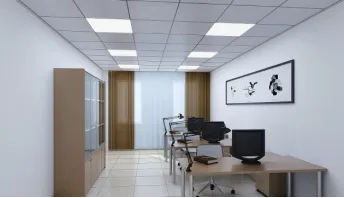Nov . 22, 2024 01:59 Back to list
gypsum board vs pvc ceiling
When it comes to choosing the right ceiling material for your home or office, two popular options are gypsum board and PVC ceilings. Each has its own set of advantages and disadvantages, making it essential to evaluate them based on your specific needs, style preferences, and budget.
Gypsum Board Ceilings
Gypsum board, commonly known as drywall, is made from a core of gypsum sandwiched between two sheets of paper. This material has been a staple in construction for decades due to its numerous benefits. One of its primary advantages is its fire-resistant properties, which can provide an added layer of safety in homes and commercial buildings. Additionally, gypsum board ceilings offer a smooth and elegant finish, making them easy to paint or decorate, catering to various design aesthetics.
However, gypsum board does come with some drawbacks. It is relatively heavy, which may require more robust support structures during installation. Additionally, gypsum can be susceptible to moisture. In humid environments, it can warp or deteriorate, making it less suitable for areas like bathrooms or kitchens unless treated properly. Repairing a damaged gypsum board can also be cumbersome, often requiring replacement of the entire panel.
PVC Ceilings
gypsum board vs pvc ceiling

On the other hand, PVC (polyvinyl chloride) ceilings have gained popularity due to their versatility and durability. Made from a synthetic plastic, PVC ceilings are lightweight, making them easier to install than gypsum board. They are also inherently moisture-resistant, which makes them ideal for humid areas like bathrooms and kitchens. PVC ceilings can withstand environmental fluctuations without warping, a significant advantage over traditional gypsum boards.
Another appealing aspect of PVC ceilings is their variety of designs and finishes. Available in multiple colors, textures, and patterns, PVC allows homeowners and designers to achieve their desired aesthetic with relative ease. Moreover, cleaning PVC panels is straightforward; a simple wipe with a damp cloth can restore their luster, making maintenance hassle-free.
However, PVC ceilings do have some concerns, particularly regarding their environmental impact. As a plastic product, PVC can be less sustainable than gypsum board, and concerns over its long-term impact on health and the environment have been raised.
Conclusion
In conclusion, the choice between gypsum board and PVC ceilings largely depends on your project requirements, aesthetic preferences, and budget constraints. Gypsum board offers a classic and sophisticated look with excellent fire resistance but may struggle in high-moisture environments. Conversely, PVC ceilings provide durability, ease of maintenance, and moisture resistance, albeit with potential environmental trade-offs. Assessing your specific needs will guide you in making the best decision for your space, ensuring that you achieve both functionality and style. Ultimately, either choice can enhance your interiors and contribute to a beautiful, finished look.
-
Durable Ceiling T Grid Systems | Easy InstallationNewsAug.29,2025
-
PVC Gypsum Ceiling: Durable, Laminated Tiles for Modern SpacesNewsAug.28,2025
-
Pvc Gypsum Ceiling Is DurableNewsAug.21,2025
-
Mineral Fiber Board Is DurableNewsAug.21,2025
-
Ceiling Tile Clip Reusable DesignNewsAug.21,2025
-
Ceiling T Grid Modular DesignNewsAug.21,2025







